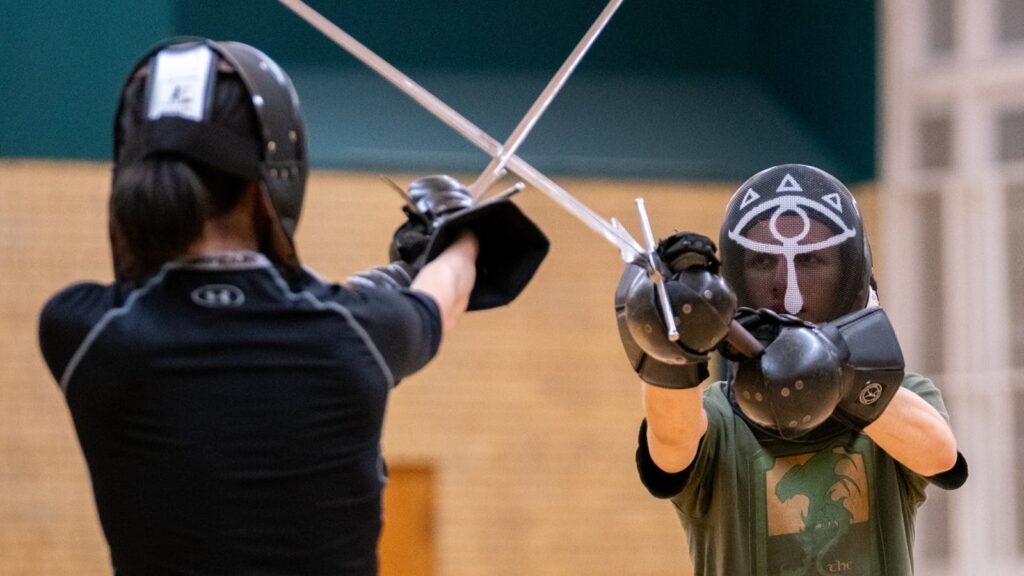Thursday nights in the IM Circle Building's second-floor gym may look like a scene from a Shakespearean play, but members of the Renaissance Sword Society don't need heavy heads or crowns — all they need is a long sword, a deep knowledge of medieval dueling tactics and a bit of padding.
Historical European Martial Arts (HEMA) is exactly as the name suggests, the study and practice of old European martial arts systems that disappeared long ago.
But here at Michigan State University, swordsmanship has seen a resurgence over the past decade, and last spring, Han Yu, a fourth-year English student, founded the Renaissance Sword Society.
Yu started practicing HEMA before enrolling at Michigan State University. When he enrolled, there were no existing clubs on campus, which motivated him to start the club. Yu said his initial goal in starting the club was to make new friends, fence with them, and ultimately train new fencers who could “take off into the world” and start their own clubs to contribute to the larger and growing HEMA scene.
It's a successful goal, but by no means an easy one, according to Yu.
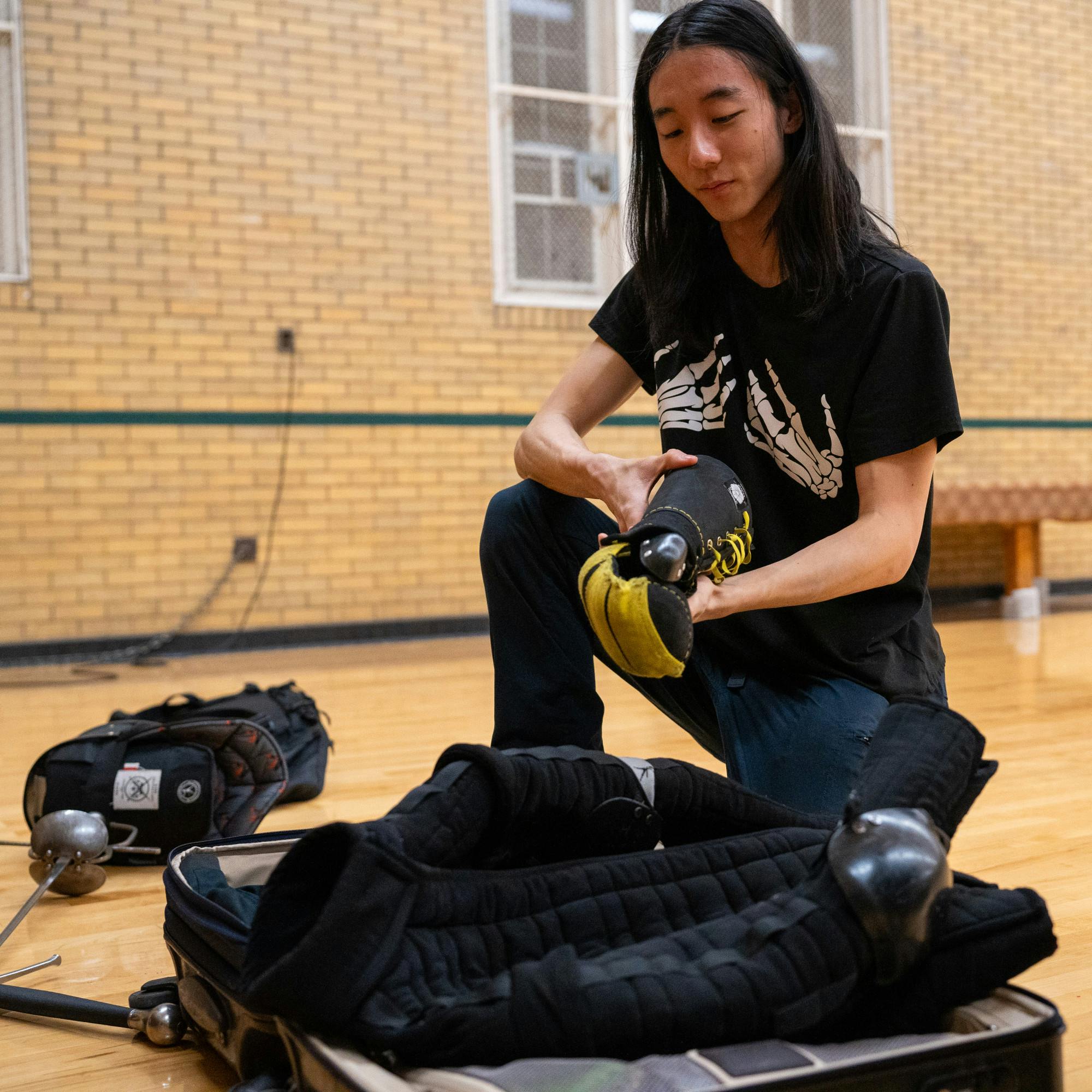
Although the Renaissance Sword Society today is a registered student organization run by donations and supporting about 15 regular members, the club began as a small group practicing out of the show hall.
“It was hard because we had no equipment or any way to meet new people other than people who would see us and ask, 'Hey, what do you do?'” said Yu, who is now the club's president.
But Yu said they were eventually able to register the club as an official student organization, which took quite some time, and things have been smooth sailing since then.
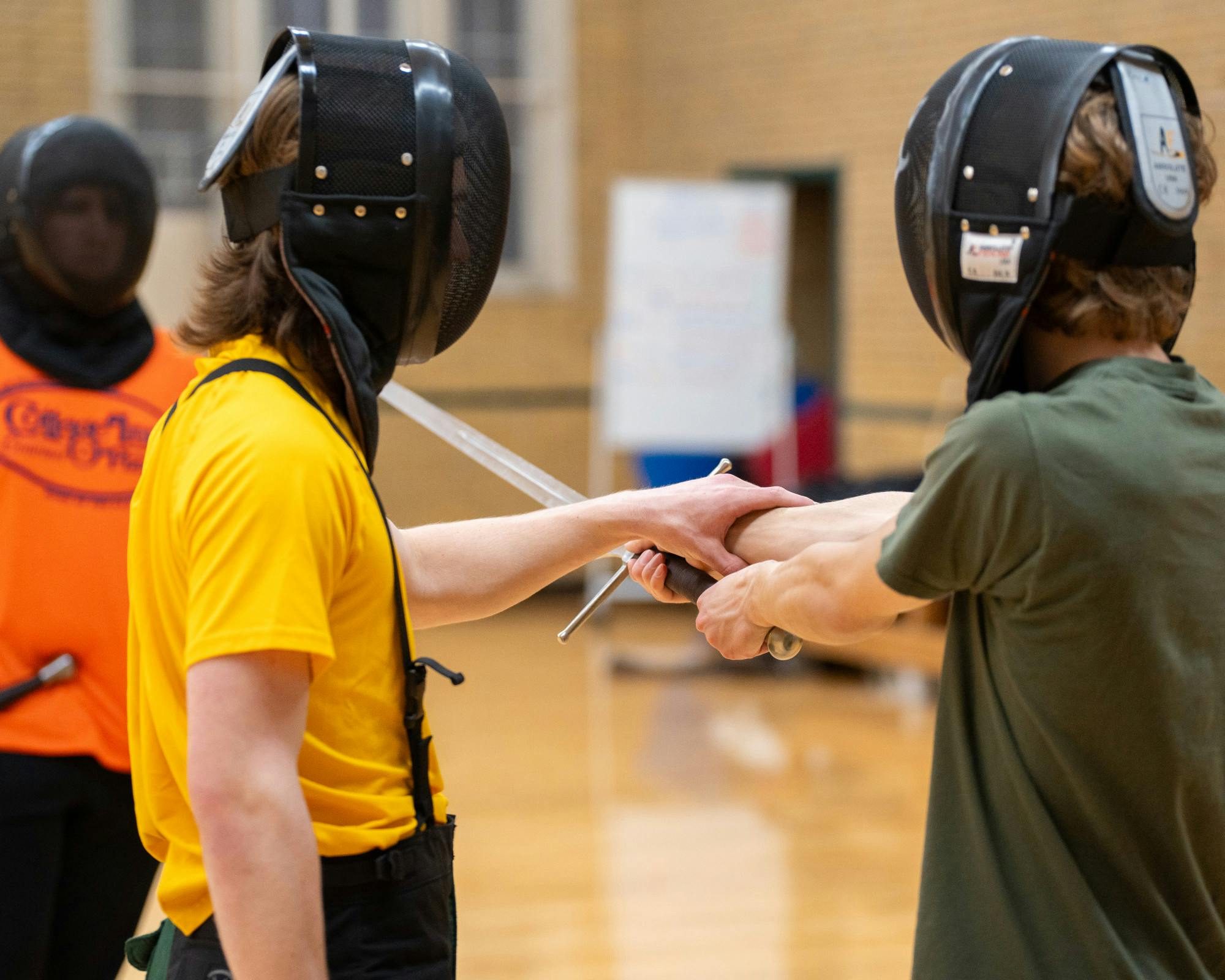
Freshman Jack McHugh helps instruct other students during an MSU Renaissance Sword Society practice session on March 28, 2024, at IM Circle.
But HEMA is much more than just clashing swords. What may seem like a simple gladiatorial sport actually requires scholarship and the interpretation of ancient texts.
Maggie Howell, the club’s current vice president and a sophomore linguistics major, said that when she first joined, the club focused on the works of 15th-century German sword master Johannes Lichtenauer.
Perhaps the most notable of Lichtenauer's works are his fencing instructions written in the form of list memory aids called “Zettels.” It is often seen as similar to poetry and subject to a lot of interpretation.
“For a newbie, it's pretty hard to look at a manuscript and understand what to do,” Howell said.
Fortunately for newcomers, part of Howell's job is to help members understand the cryptic messages written in centuries-old documents, but that can be difficult.
The club is currently focusing on Joachim Mayer, a 16th-century German master swordsman, who Howell said was writing for an audience that already knew about swordsmanship and simply adding concepts to make it more artistic.
“We don't know how to fence, so we're learning how to fence and at the same time how to do it artistically, which makes it even more difficult,” she said.
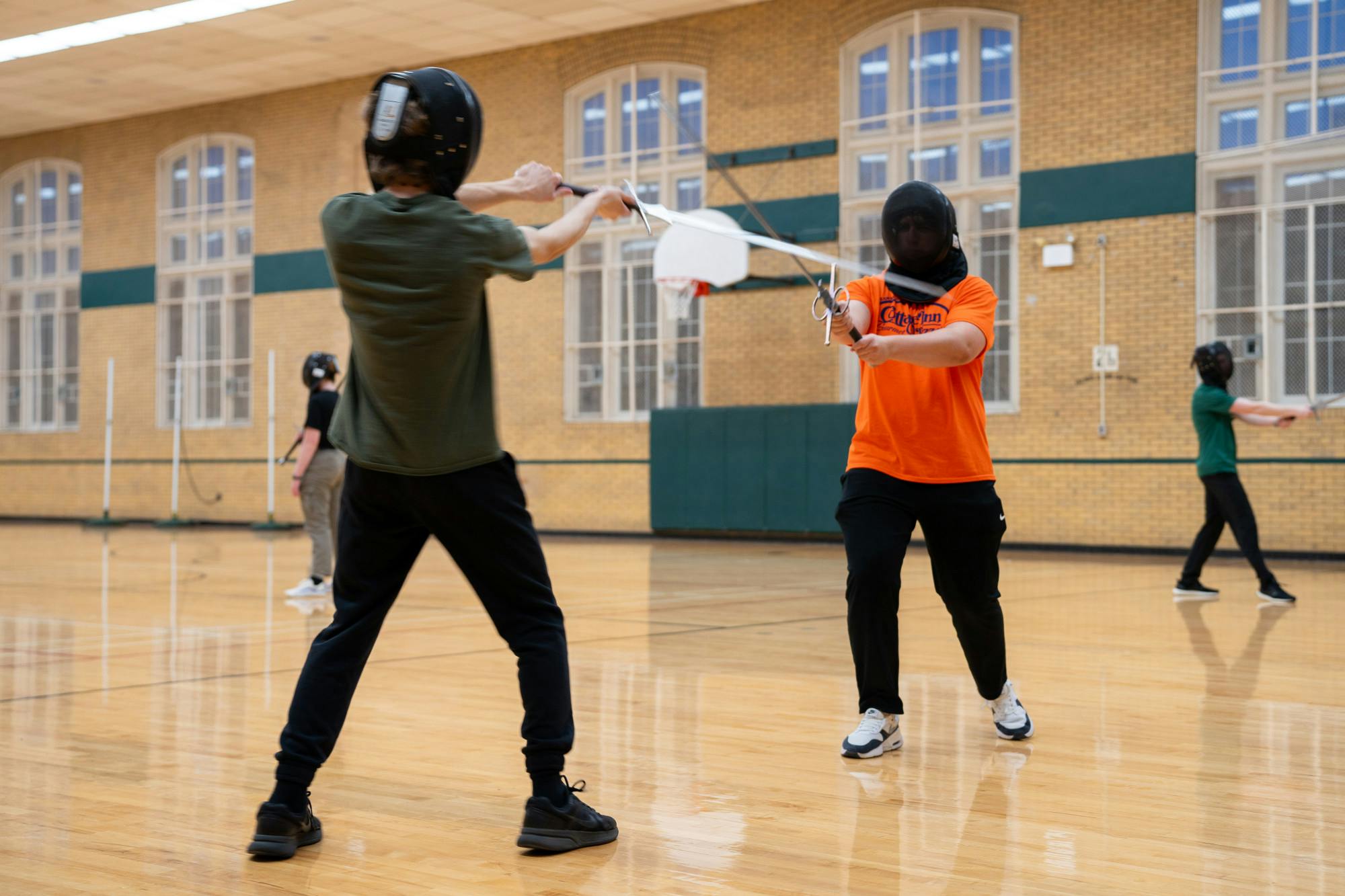
Students practice different techniques and drills during an MSU Renaissance Sword Society practice session on March 28, 2024, at IM Circle.
While certainly challenging, Howell said studying a fighting style based on an old book adds an element of conversation and opens the door to multiple interpretations and discussions depending on how the text is read.
“Every club is going to interpret Meyer a little differently,” said Jacob Stybar, a sophomore computer science and engineering student.
Support student media!
Please consider donating to The State News and help fund the future of journalism.
But it's not just Renaissance Sword Society members who are translating old works by masters like Lichtenauer and Meyer: The club frequently brings in guest lecturers who help put the words of poetry into action, including members of the Lansing Longsword Guild.
For Yu, what attracted him to HEMA was the academic pursuit that came with it. Before starting HEMA, he was primarily interested in swords, but the educational aspect sparked a deeper interest in European history.
While it is certainly possible to become a good HEMA fencer by simply going to the gym and asking questions of the instructor, Yu says what separates good fencers from great ones is their understanding of the textbook and their ability to apply that knowledge to practice in the gym.
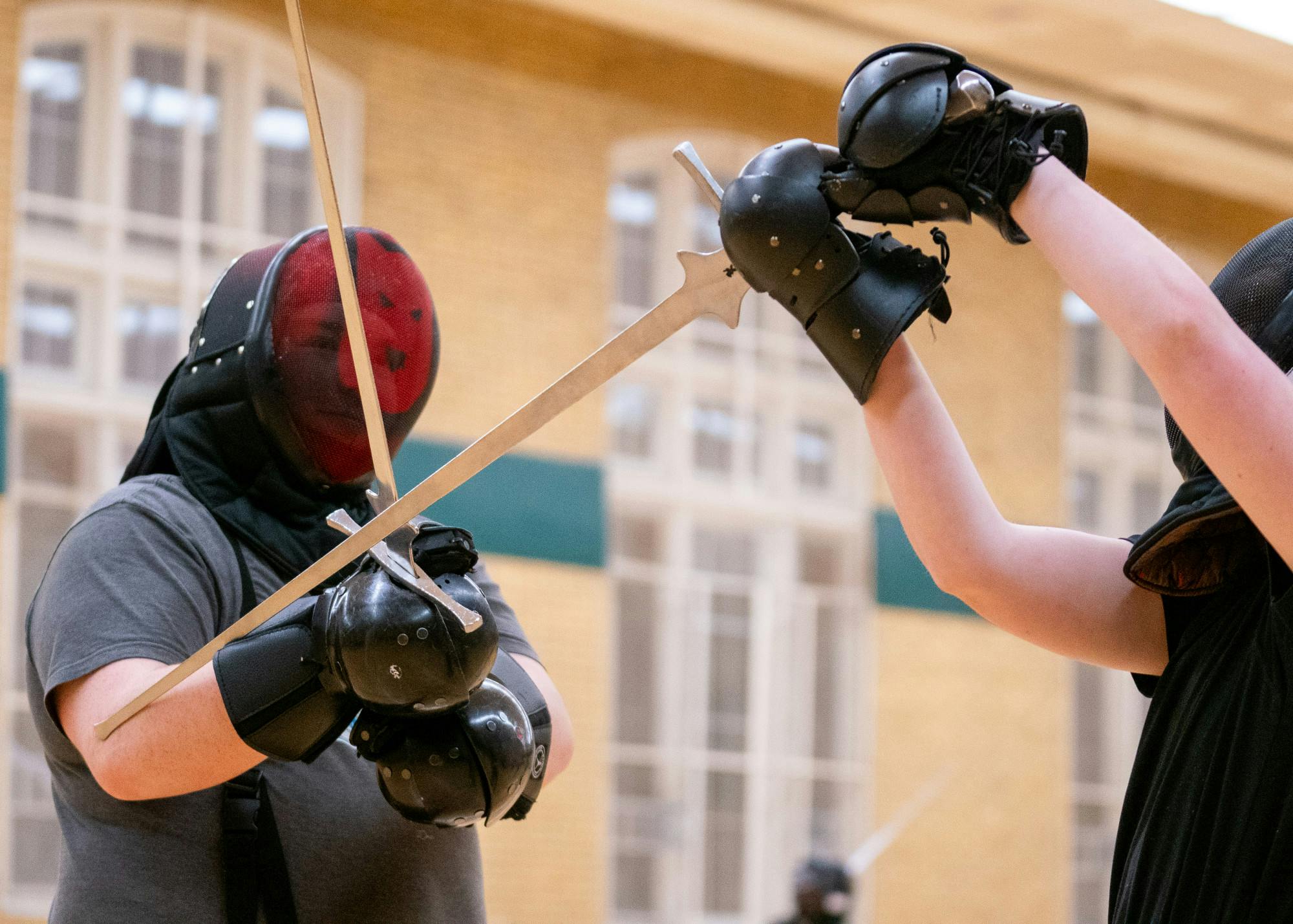
Sophomore Jacob Stibel practices different techniques and drills during a Michigan State University Renaissance Sword Society practice session on March 28, 2024, at IM Circle.
The educational aspects of the club don't get in the way of the fun: Yu describes it as a “calm and relaxing” place.
“I've been to some HEMA clubs in the past where they have a two-hour block and the first hour is just exercise,” Yu said. “That's not why people come, is it? They come to learn how to sword fight.”
And while, like most hobbies, the complexities can seem a bit daunting, Yoo said one of the best things about the club is the community that is so welcoming to newcomers. Not only that, but through the club and the Lansing Longsword Guild, Yoo said he's met many people he now considers friends.
Howell is intrigued that everyone at the club, including the officials, is still learning, but even more than that, she enjoys teaching others what she's learned.
“That's why I agreed to become a police officer,” she said.
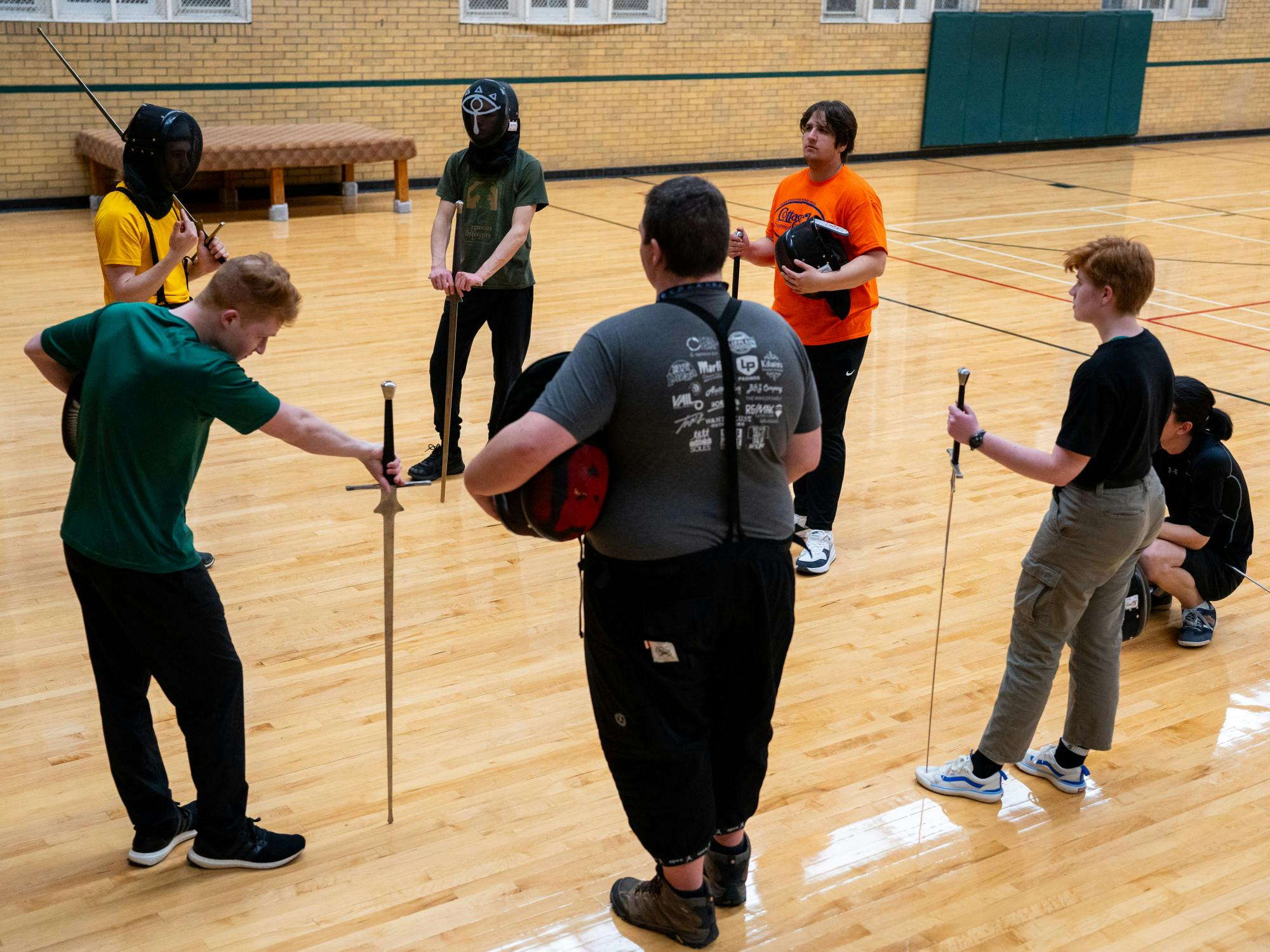
Freshman Jack McHugh helps instruct other students during an MSU Renaissance Sword Society practice session on March 28, 2024, at IM Circle.
Discussion
Share and discuss “Renaissance Sword Society Members Revive Medieval Martial Arts at Michigan State University” On social media.

